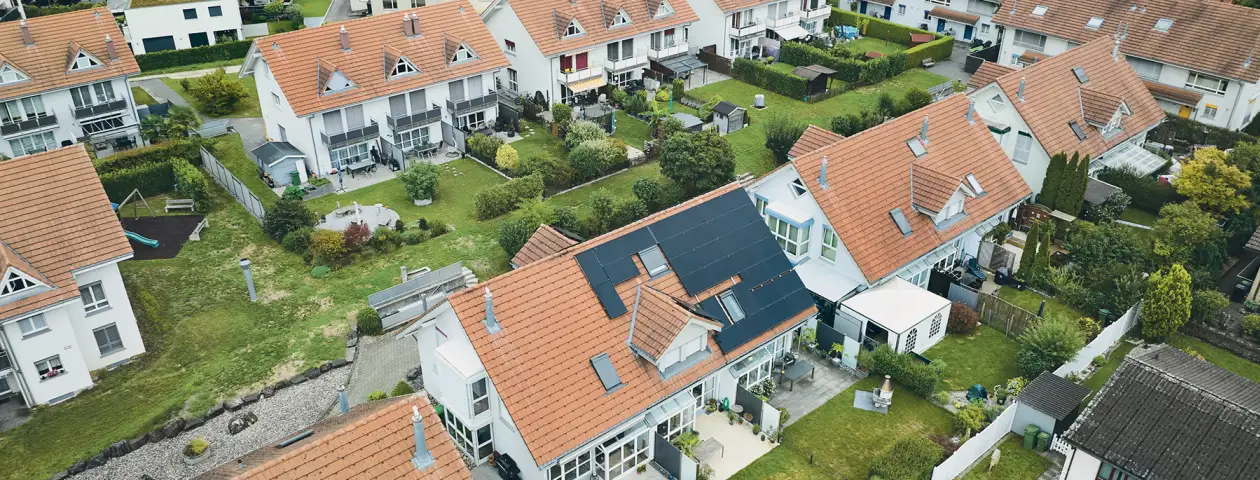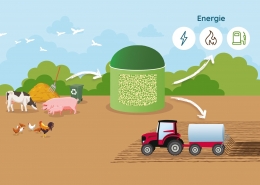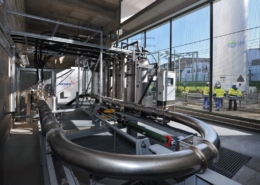In Basel-Stadt, large parts of the gas network will be shut down by 2037, with other cantons following suit. However, the cut is not so radical everywhere. Gas as an energy source is not disappearing so quickly. A yellow stub. A shelf in the room where the gas burner used to be. That's all that's left of the gas connection in Stefan Lohberger's house in Biberist (SO). He had it cut a few months ago and dug the hole to expose the gas connection outside the front door himself. After the excavation, two employees of his gas supplier removed the gas meter and disconnected Lohberger's detached house from the gas network.
Decision of common sense
"It's a relief," says the self-employed jewelry designer. He made the decision before the war in Ukraine, which then accelerated the project. Together with the SolAar self-build cooperative, a joint project was created with friends and family, under the expert guidance of construction specialists: a photovoltaic system on the roof and a geothermal probe heat pump in the basement. "The project was close to my heart," says Stefan Lohberger. Burning fossil fuels is an outdated technology. "We have to say goodbye to that," he says.
Decommissioning for private gas use
The gas network of Industrielle Werke Basel (IWB) covers around 15 percent of the energy demand - two thirds of which is for heating in houses and apartments. Parts of the gas network are now to be decommissioned by 2037. On November 27, 2022, the electorate of the canton of Basel-Stadt voted in favor of a net-zero target by 2037. At the beginning of the year, the canton's Grand Council decided to decommission the entire distribution network for comfort gas. This refers to gas applications for space heating and hot water as well as for cooking.
IWB, which in addition to the municipalities of the canton of Basel-Stadt supplies gas to a further 29 municipalities in the cantons of Basel-Land, Solothurn and Aargau and is therefore one of the three largest gas suppliers in Switzerland, has been commissioned with the implementation. IWB has developed a plan as to when which areas will be disconnected from the gas network and which solutions will then be available. Where connection to a district heating network is possible, this is recommended.
How other cantons are proceeding
While the canton of Basel-Stadt is consistently moving away from comfort gas, the fossil fuel is not yet disappearing elsewhere. A survey of cantons and individual energy suppliers shows that Thurgau and Zurich are pursuing the most aggressive strategy. In the canton of Zurich, the aim is to reach net zero by 2040, or 2050 at the latest. "To achieve this, sales of natural gas must fall sharply," says Katharina Weber, spokesperson for the cantonal building department. In future, heating requirements could be met entirely from local sources.
Renewable gas is intended for specific applications in the canton of Zurich, such as high-temperature processes in industry. The local gas network operators and the municipalities are responsible for forward-looking planning of the gas network. There is no cantonal regulation for this. The cities of Zurich and Winterthur have already committed to phasing out gas as an energy source in buildings by 2040. In Winterthur, those affected who have to replace their building services prematurely as a result will be compensated to the extent of the residual value.
The city of Zurich's gas strategy stipulates that only gas from renewable sources is to be supplied via the city's gas distribution network. New areas will no longer be developed and unprofitable areas of the network will be shut down. Where a connection to district heating or even to a thermal network is possible, the supply of gas is to be largely shut down. This is to be done gradually. Here, too, owners will be compensated.
From 2040, the supply of gas for heating energy in the Thurgau capital Frauenfeld will "no longer be guaranteed", which "makes more sense from an economic point of view than a forced switch to district heating", says Peter Wieland, Managing Director of the municipal energy supplier Thurplus. Homeowners can already have their properties disconnected from the gas grid for around CHF 300 and switch to one of the energy supplier's other offers. Thurplus plans to increase the minimum proportion of biogas in heating applications from gas from 10 to 20 percent in the near future.
Conversion to renewable gases
The canton of Berne takes a different view. There are no plans to dismantle the gas networks here, "but to convert to renewable gases so that fossil fuels can be replaced as quickly as possible", according to the Office for the Environment and Energy. When replacing heating systems, there are legal requirements that are intended to accelerate the phase-out of fossil fuels for heating buildings. The gas network operators and their customers are ultimately also guided by these requirements. In Biel, for example. More than 40 percent of building heating in Biel is currently generated using gas. And the trend is falling. New buildings are no longer connected to the gas network. Martin Kamber, member of the management of Energie Service Biel (esb), says: "In areas with district heating, we recommend switching." Otherwise, the gas supply will be greened with a proportion of biogas. In addition, owners are compensated for the residual value of their building technology if they connect to district heating. Esb does not want to shut down the gas network, but rather optimize it for industrial customers.
The home canton of the third major gas player in the market is not yet ready to reveal its gas strategy. However, Services Industriels de Genève (SIG) has already positioned itself accordingly. According to its 2022 annual report, the energy supplier sold around 2.5 terawatt hours of gas and produced 17 gigawatt hours of biogas itself - this should continue to play a role in a broadly diversified mix of renewable energies in the future.
Developing a strategy
Homeowners therefore have plenty of time to prepare for the gas phase-out. Nevertheless, energy consultant Claudio Fuchs from Andelfingen (ZH) recommends that they draw up a renovation strategy soon. "The user requirements must be defined, corresponding subsidies applied for, the technical parameters of the heating replacement evaluated and the systems installed."
Stefan Lohberger has no regrets about the switch. In the last four quarters, his PV system produced around 20,000 kilowatt hours (kWh) of electricity, of which he only consumed 5,000 kWh himself. "My electricity bill has dropped dramatically," he says. Working under expert supervision has also reduced costs. In addition to the subsidies, the self-build made cost savings of around CHF 15,000 possible.
https://youtu.be/UHecCzWPY6g
By Bruno Habegger (text) and Gerry Nitsch (photos)
Adapted text from the EnergieSchweiz energy journal


 climeworks AGIt’s time to ACT – innovators from industry and researchers are called to action!
climeworks AGIt’s time to ACT – innovators from industry and researchers are called to action!  Ökostrom Schweiz Le biogaz agricole expliqué à mon voisin
Ökostrom Schweiz Le biogaz agricole expliqué à mon voisin  ShutterstockEnergiezukunft als Tagesgeschäft
ShutterstockEnergiezukunft als Tagesgeschäft  Westenergie AGLorsque le courant circule sans résistance
Westenergie AGLorsque le courant circule sans résistance 
 BFE
BFE
Neuste Kommentare